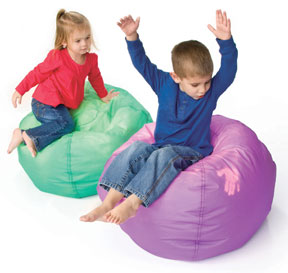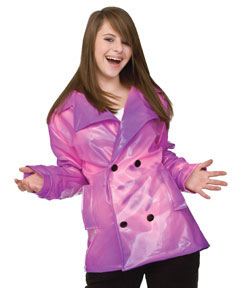Search Case Studies
End-Use Case Study
- Child’s Dream Inspires Color Changing Materials

Bean bag chairs made of thermochromatic material
A little girl’s nighttime dream of a magic coat that changed color in the rain inspired the founding of Chameleon International. Partnering with experts in color pigments and materials manufacturing, Chameleon successfully developed their ChroMyx product line of patented thermochromatic materials, whose color can change at the touch of a hand.
“We are very proud of our extraordinary material,” said Debra Aperfine, President of Chameleon. “Our patented, one-of-a-kind ChroMyx product line visually indicates temperature differences through color change. These color-changing properties will enhance old products and inspire the imagination for new products in multiple industries.”
Thermochromatic materials function by changing color once certain temperatures are reached and reverting back to their original color once the standard temperature returns. A benefit of ChroMyx is that its color-changing property cannot be washed out or damaged by marring.

Raincoat made of thermochromatic material
To guarantee quality products, Chameleon insists Wiman use only non-DEHP plasticizers and PVC that is completely phthalate- and heavy metal-free, as well as RoHS compliant when manufacturing their films. “One of our main goals was to provide a product safe for multiple industries, including industrial, apparel, furniture, and medical,” said Aperfine. “We use only the highest quality ingredients with no harmful additives and produce non-contagious, inflatable, pinhole-free material.”
Wiman uses a cast extrusion process to manufacture its films and has a unique capability to laminate a cloth or fiber backing simultaneously during extrusion. “These materials can be laminated, RF-sealed, stitched, and even printed on,” says Aperfine. “ChroMyx can be used in any current or new products needing a vinyl, synthetic leather, or flexible film, or even in woven textiles,” added Aperfine. In addition to PVC, the technology is compatible with polyurethane, polypropylene, and polyethylene.
Chameleon has worked with Wiman from the beginning to develop and test the economic feasibility of ChroMyx. “I can’t imagine where we might be today if Wiman had not been interested in working with us,” said Aperfine. “Their willingness to take on any challenge echoes throughout the company in their dedication, persistence, and loyalty to their customers. We continue to work with them in research and development to be able to add more versatility to our ChroMyx line.”
Located in Oakridge, NC, Chameleon International is the exclusive manufacturer and distributor of patented ChroMyx products, which are currently being tested by several large companies. For more information, visit www.chameleonint.com.




